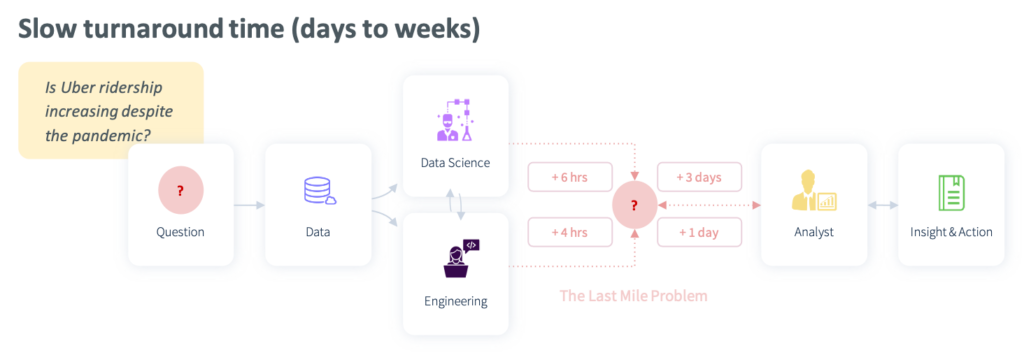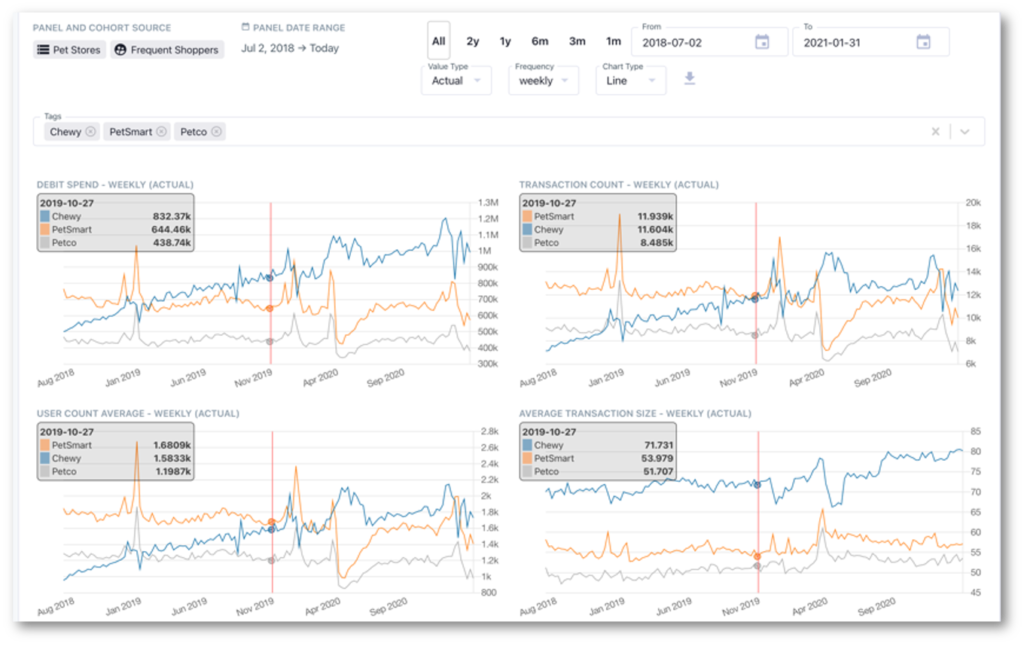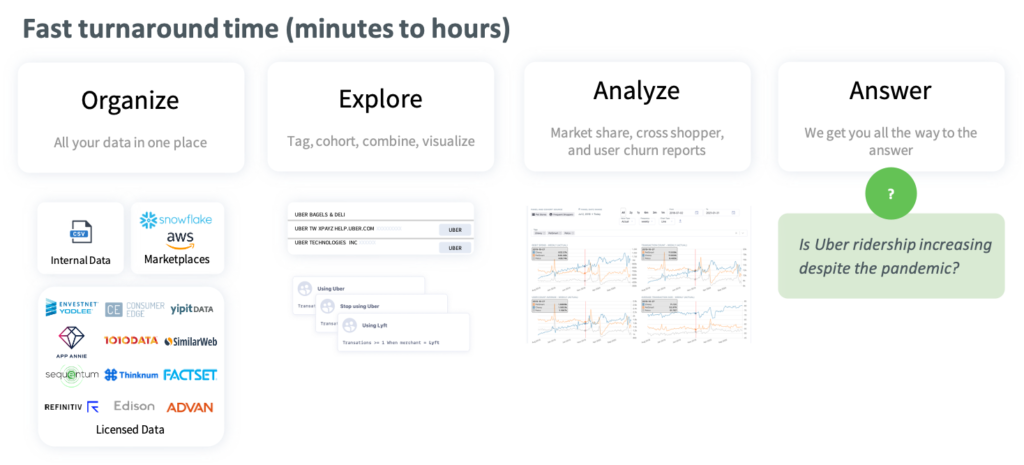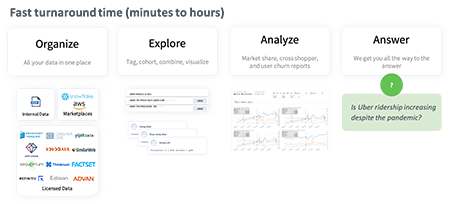Alternative Data Landscape
IBM is frequently cited for the claim that 90% of the world’s data was created in the past 2 years, a mind-boggling statistic. The rapid increase in mobile phone usage, mobility technology, 5G, iOT and data extraction technology has contributed to the explosion of alternative datasets growing the alternative data market to $1.7B in 2020 with projections to reach $11B in 2026.This logarithmic rise in data has quickly overwhelmed data engineers and scientists as they juggle massive testing backlogs, inefficient systems, inadequate tools, and endless data vendor calls. Alternative data marketplaces tout their scale;
- Battlefin with over 1,000 data products from 860 data providers
- Neudata has over 5,000 datasets from 1,000 data vendors
- Eagle Alpha mentions over 1,250 data providers
- AWS Data Marketplace that has doubled the number of data providers in the past year
- Snowflake with 375 datasets across 125 data providers
- Crux has over 100 data providers
With this amount of data, it’s easy to be overwhelmed as you think about how to extract business and investment insights from a tsunami of data.
Velocity of Data makes it difficult to Scale
Too much data isn’t the problem, the problem is that tools and technology have not kept pace with the logarithmic rise in data. This has led to systems that don’t scale costing companies millions of dollars a year from inefficient processes and unrealized gains from using the wrong data or not being able to incorporate new signals fast enough into existing models. The increased velocity of new datasets has created large testing backlogs, even for the most sophisticated hedge funds, consultancies and corporates with significant data engineering resources. Behind the scenes, the thoroughbreds are in a race to find insights in data before their competitors all while the masses are still struggling to get to the starting line.
Tools and Solutions Today
Most often data related problems are solved by utilizing the internal tool called “lots of smart people” (100+ teams of data engineers and scientists) that will leverage a variety of tools including SQL, Python, Jupyter Notebooks, PowerBI, Tableau and of course ‘ole reliable, Excel. On top of these tools, well-resourced companies have invested tens of millions into their home-grown systems to manage data ingestion, cleansing, normalization, tagging, validation, cohorting and model creation. With any of these solutions, you cannot forget about the IT department, which is typically backlogged and can only handle a handful of tickets at a time to solve login, configuration, security and connectivity issues. These systems are no match for the increased velocity of data and increased pressure to find insights from decision makers.
Insight Generation Process
The insight generation process is complex and iterative in nature involving teams of stretched engineers and data scientists coordinating to produce a solution.

Solutions exist, but they only tackle parts of the problem. On one end, companies are tackling the data ingestion problem but those solutions don’t solve the needs of the end decision maker. On the other end, companies have created solutions targeted to the decision maker with easy to use reports, but these reports are static in format and do not allow for proprietary insight discovery or transparency into the rules used to create the insights.
The Industry Need for Better Technology
Leading companies are recognizing the need for better tools and technology. Bloomberg acquired Second Measure, SimilarWeb announced a $120M round to help fund technology and platform R&D, Knoema purchased the Adaptive Management platform, and Yodlee/Envestnet acquired TXN. We acquired Datavore and partnered with the top transaction data provider to provide a no-code platform to help investors and business leaders access predictive data solutions with limited data science or infrastructure resources.

Democratize data with technology
An emerging trend is no-code platforms that solve complex data workflows without the need for engineering or data science teams. Companies from Airtable to Squarespace to Zapier are providing low or no-code solutions to solve vertical specific challenges. Above Data is the first no-code platform squarely positioned to solve end-to-end data analytics for business and investment decision makers.

No-code platforms democratize data by improving access to complex datasets. Improved access leads to greater confidence in the solutions and insights derived from the underlying data. With an ever-increasing amount of data, better tools are paramount to improve decision making.
We are working with early adopters in the hedge fund, consultancy and corporate space to solve their data challenges. In the coming posts, we will be sharing more details on key features.

